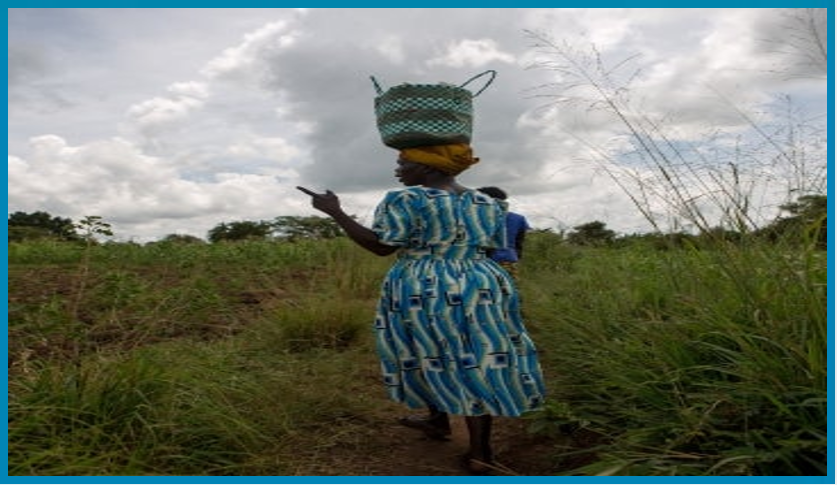One of the key findings from a recent gender norms market system diagnostic conducted by CGAP, FSD Uganda, and the FSD Network in Uganda’s Busoga subregion was a widespread belief that women should not own land or have large assets registered in their names. At the heart of this norm is a widely held view in Busoga that “a property cannot own a property.” Women, particularly married women, are seen as belonging to men and are therefore not entitled to own land or large assets.
Norm identified in Uganda diagnostic: Women in the Busoga region in Uganda should not own land or have large assets registered in their names.
Women who attempt to challenge this norm often face harsh social sanctions. The diagnostic revealed that some are labelled “uncontrollable,” threatened with divorce, or otherwise punished by their families and communities.
“Hardworking single women can afford to buy things for themselves, but if you are a housewife, it will take you some time to own such things because men cannot let a woman own assets; men do their best to control women.” – Female participant in a focus group discussion, Jinja
The diagnostic found that most men, and some women, including key influencers such as in-laws, community, and religious leaders, believe that all assets should be registered in the man’s name. However, the diagnostic also found that this belief is held by varying degrees of strength by different market actors, including staff and management within financial service providers (FSPs), policymakers, and supporting function providers, resulting in potential opportunities for development actors to intervene.
While constraints to women’s financial inclusion are well known, to effectively tackle them, it is necessary to understand why women are excluded. What are the root causes – that is, what causes people and institutions to behave the way they do, and how do these behaviors lead to women’s exclusion? How do gender norms – beliefs about what women should and should not do – impact not just women’s behavior, but the behavior of all market actors in the financial system? Understanding how these norms impact behavior allows us to determine which specific behaviors need to change and then how best to intervene to address constraints to women’s access to and use of financial services.
When gender norms dictate that women should not own assets, as seen in Busoga, women are unable to meet collateral requirements set by FSPs. In response, FSPs offer group loans to women using group guarantees in lieu of collateral. But group loans are generally small, constraining women’s ability to invest in productive activities or expand their businesses. This one-size-fits-all lending strategy overlooks variations in creditworthiness, business types, and financial capability among female group members. Consequently, FSPs do not build experience in lending directly to women, including their ability to fully comprehend women’s capacity to borrow, their needs, and preferences. This results in credit products and biases in credit assessment that ultimately favor men, thus perpetuating the norm that “women should not own land or have large assets registered in their name.”
As a result, supporting function providers such as credit reference bureaus and movable asset registries do not endeavor to put in place structures and processes that support alternative ways to assess women’s creditworthiness. Similarly, rule makers, including the central bank and policymakers, do not invest in ensuring fully functioning infrastructure and data management processes that are relevant to women. Figure 1 below shows how, in Busoga, this norm impacts not only women’s behavior but also the behavior of all market actors, leading to significant constraints to women’s financial inclusion.
Figure 1: Norms map
Once it is better understood why market actors behave the way they do and the constraints that result, how can FSD Uganda and other actors interested in increasing women’s financial inclusion in Uganda incentivize and build the capacity of FSPs, supporting function providers, and rule makers, to view women as viable credit customers? To identify opportunities to influence change, it is helpful to dig deeper into the diagnostic findings to determine if there are any differences in the prevalence and strength of the norm between different market actors.
Figure 2: Analysis of strength and prevalence of the norm

Figure 2 indicates an encouraging pattern for this norm, showing moderate to low prevalence (the extent to which a gender norm is followed) and decreasing strength (the extent to which a gender norm is held and enforced) among rule makers and supporting function providers, while moderate for FSPs and somewhat stronger for women and their communities. Since rule makers and supporting function providers already see the norm as less restrictive, they can play a key role in supporting and encouraging FSPs to include more women by using collateral alternatives such as cashflow-based lending, revised algorithms, and the use of moveable assets for collateral.
These solutions all require the various market actors to work together; it is not just a supply issue. For example, there is a need for better infrastructure – that is, credit reference bureaus need to consider the unique circumstances of women borrowers, taking into account the data points women generate. A fully functioning collateral registry that considers women’s capacity to own assets, expertise in valuing assets, a ready market for movable collateral, well-informed FSPs, and instruction for women on how to use the registry are likewise needed.
This also requires revised policies and improved government oversight. For example, the diagnostic found that banks do not generally accept movable collateral, and the regulator does not enforce the law on the use of movable collateral. As well, the Ugandan Central Bank requires banks to take 130% collateral, and for loans unsecured by land, provisions are even higher. Regulatory frameworks need to be revised to incentivize innovation in lending practices that address the unique challenges faced by women, to promote fair lending practices, and to dictate transparency in credit assessment processes.
Regulators can also mandate FSPs to collect gender-disaggregated data and to analyze this data to better understand women’s financial service needs and capacities, as well as the business case to serve more women. FSPs need revised policies and processes to accept alternative collateral and expand their product offerings to women beyond group loans, utilizing credit bureaus and the collateral registry. This will require revised credit assessment criteria to eliminate biases, and the use of technology and data analytics to develop more equitable credit scoring models that account for diverse financial behaviors and histories.
The important point to note is that these changes build on changes already happening in Uganda with regard to gender norms as illuminated by the diagnostic. It is clear that for FSD Uganda to effectively facilitate market system change, the focus should not be on changing women’s behavior. Rather, change happens through understanding the reasons why women are excluded and the constraints they face, and how norms influence the way the financial system works – providing crucial information for a market facilitator such as FSD Uganda to best intervene to make the system work better for women.



